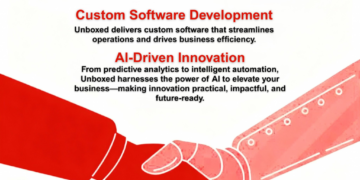Introduction
Advanced Driver-Assistance Systems (ADAS) are transforming modern transportation by enhancing vehicle safety, driver convenience, and overall traffic efficiency. From lane-keeping assistance to automatic emergency braking, ADAS relies heavily on artificial intelligence (AI) and machine learning algorithms to make real-time decisions. However, the accuracy and reliability of these systems depend on high-quality labeled data. This is where ADAS data annotation plays a critical role, turning raw sensor data into actionable insights for AI models and improving the performance of autonomous and semi-autonomous vehicles.
What is ADAS Data Annotation?
ADAS data annotation involves labeling various types of sensor data—such as LiDAR point clouds, radar signals, camera images, and ultrasonic sensor inputs—to identify objects, lane markings, pedestrians, vehicles, traffic signs, and other elements critical to driving. Proper annotation enables machine learning models to recognize patterns, detect obstacles, and make safe navigation decisions in real-time.
Unlike traditional image annotation, ADAS data annotation often involves multi-sensor datasets and requires precise 3D labeling for point cloud data, ensuring the AI can perceive depth, distance, and movement accurately.
Enhancing Safety Through Accurate Labeling
One of the most significant benefits of ADAS data annotation is its contribution to road safety. By providing meticulously labeled datasets, AI models can accurately detect pedestrians, vehicles, cyclists, and obstacles in various lighting and weather conditions. This leads to fewer false positives and negatives, improving collision avoidance and minimizing accidents.
Annotated datasets allow ADAS features, such as adaptive cruise control, emergency braking, and lane departure warnings, to respond more effectively. By improving model accuracy, ADAS data annotation ensures that vehicles can navigate complex urban and highway environments safely.
Improving Traffic Efficiency
In addition to safety, ADAS data annotation contributes to smoother traffic flow and better transportation efficiency. Labeled sensor data enables AI models to predict vehicle trajectories, optimize lane changes, and maintain safe following distances. Vehicles equipped with well-trained ADAS systems can communicate with each other and adapt to traffic conditions in real-time.
Properly annotated data also supports advanced features such as traffic sign recognition, congestion prediction, and intelligent routing. These improvements reduce travel time, fuel consumption, and environmental impact, contributing to smarter and greener urban mobility.
Supporting Autonomous Vehicle Development
ADAS features are often the foundation for fully autonomous vehicles. High-quality ADAS data annotation ensures that autonomous vehicle algorithms can generalize to diverse environments, including urban streets, highways, and rural roads.
Labeled datasets from multiple sensors are essential for tasks like object detection, lane recognition, and sensor fusion, enabling vehicles to make decisions with minimal human intervention. By training AI models on rich, annotated data, developers can accelerate autonomous vehicle deployment while maintaining safety and compliance standards.
For insights on handling complex datasets for AI model training, consider exploring Managing Multilingual Data Annotation Training. Multilingual annotation strategies ensure that AI systems can adapt to diverse environments and regional variations in traffic patterns and road signs.
Key Advantages of ADAS Data Annotation
1. Enhanced Perception Accuracy
Annotated data enables machine learning models to detect objects more precisely, even under challenging conditions such as night driving, fog, or heavy rain. High-quality labeling reduces errors and ensures that ADAS features respond accurately to real-world scenarios.
2. Scalability of AI Training
By organizing and labeling large volumes of data, ADAS data annotation allows for scalable AI model training. Autonomous systems can be trained on diverse datasets from different geographic locations, improving adaptability and robustness.
3. Faster Development Cycles
Annotated datasets accelerate the development of ADAS features by providing ready-to-use data for training and validation. This reduces the time required for simulation and real-world testing, allowing faster deployment of safer and smarter vehicles.
4. Multi-Sensor Integration
ADAS systems rely on multiple sensors such as cameras, LiDAR, and radar. Annotation of multi-sensor data ensures proper fusion of information, helping AI models understand the environment in 3D and make more accurate predictions.
Top 5 Companies Providing ADAS Data Annotation Services
Several companies specialize in high-quality ADAS data annotation services to support autonomous driving and ADAS development. The top providers include:
- Digital Divide Data (DDD) – Offers end-to-end data annotation solutions, Digital Divide Data including multi-sensor labeling for ADAS and autonomous vehicle AI.
- Scale AI – Provides large-scale ADAS annotation with a focus on precision and consistency for LiDAR, camera, and radar data.
- Mighty AI (acquired by Uber ATG) – Delivers annotated datasets for ADAS and autonomous vehicle perception models.
- Playment – Specializes in 3D point cloud annotation, object detection labeling, and sensor fusion support for ADAS systems.
- Samasource – Offers scalable and high-quality annotation services for ADAS datasets, emphasizing accuracy and fast turnaround.
These companies, including Digital Divide Data, ensure that annotated datasets meet the stringent requirements of automotive AI development, driving safer and more reliable ADAS solutions.
Future Trends in ADAS Data Annotation
Active Learning Integration
Future ADAS data annotation will increasingly incorporate active learning pipelines. By continuously identifying edge cases and difficult scenarios, AI models can be retrained iteratively, improving performance and adaptability across diverse driving environments.
Automated Annotation Tools
AI-powered annotation tools will streamline the labeling process, reduce manual effort, and maintain high accuracy. Automated solutions, combined with human review, will create efficient workflows that balance speed and precision.
Global and Multilingual Datasets
As ADAS deployment expands worldwide, annotated datasets must cover diverse regions, languages, and road rules. Managing multilingual annotation ensures AI models can interpret traffic signs, road markings, and environmental cues accurately across different geographies.
Conclusion
ADAS data annotation is a cornerstone of modern driver-assistance and autonomous vehicle technologies. By providing high-quality labeled datasets, these annotation workflows enhance safety, improve traffic efficiency, support autonomous vehicle development, and accelerate AI model training.
Top companies in the industry, including Digital Divide Data, Scale AI, Mighty AI, Playment, and Samasource, offer specialized services that enable automotive developers to deploy robust and reliable ADAS features. As autonomous and semi-autonomous technologies evolve, the importance of accurate, scalable, and multi-sensor data annotation will continue to grow, shaping the future of safer and smarter mobility worldwide.

















